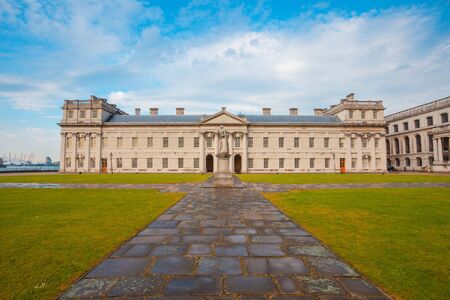Reimagining British Heritage: An Introduction
Classic British architecture, with its stately facades, ornate fireplaces, and grand sash windows, evokes a sense of enduring heritage and refined charm. Think of the dignified drawing rooms in Georgian townhouses, or the inviting warmth of Victorian terraces nestled along tree-lined streets. Yet, within these distinguished walls lies an untapped potential for transformation—a unique opportunity to blend the wisdom of ancient Eastern philosophy with time-honoured Western design. Imagine stepping into a living room where the intricate mouldings and high ceilings are not only a nod to Britain’s illustrious past but also resonate with the harmonious energies of Feng Shui. This fusion promises more than aesthetic pleasure; it offers a sanctuary where history and spirit flow seamlessly together, creating spaces that uplift both heart and home. In this article, we embark on a journey to explore how classic British architecture can embrace the gentle power of Feng Shui, reimagining our living spaces as places of balanced beauty, well-being, and soulful connection.
2. Foundations in Stone and Spirit
Step into a classic British living room, and you’re immediately greeted by an aura of timelessness—a harmonious blend of architectural grandeur and homely comfort. The defining elements, such as majestic bay windows, ornate fireplaces, and intricate cornicing, tell stories of heritage while inviting us to consider their deeper energetic roles through the lens of Feng Shui.
Key Features and Their Energetic Significance
| Architectural Feature | British Heritage Value | Feng Shui Impact |
|---|---|---|
| Bay Windows | Flood rooms with natural light, offering expansive views of gardens or cityscapes—an emblem of Victorian and Edwardian homes. | Encourage vibrant Qi flow, fostering clarity and uplifting energy; best enhanced with lush greenery or gentle curtains to soften sharp angles. |
| Fireplaces | Serve as the heart of the home, historically a gathering point for warmth and conversation—often adorned with carved mantels. | Symbolise the fire element, bringing passion and transformation; proper placement ensures energy does not overpower but instead nurtures harmony. |
| Cornicing & Mouldings | Add ornamental distinction to ceilings and walls, echoing Georgian refinement or Victorian flourish. | Create gentle transitions between spaces, supporting smooth Qi circulation and easing any oppressive angularity in the room’s structure. |
A Living Dialogue Between Stonework and Energy Flow
The synergy between these features goes beyond mere aesthetics. In a space where every cornice casts a delicate shadow and every bay window frames shifting daylight, there is an ongoing conversation between solid tradition and dynamic energy. For instance, a well-placed fireplace not only anchors the room physically but also spiritually grounds its occupants. Meanwhile, generous windows invite nature’s vitality indoors, balancing the stillness of stone with the movement of light and air.
Cultural Resonance Meets Spiritual Wellbeing
When integrating Feng Shui principles into a British architectural context, we honour both cultural narrative and personal wellbeing. It’s about respecting the old—polished wood floors worn smooth by generations—and welcoming the new—arrangements that encourage peace, connection, and prosperity. By thoughtfully embracing these foundational elements in both stone and spirit, we create living rooms that are not just beautiful to behold but deeply nourishing to inhabit.

3. Cultural Resonance: Bridging Tradition and Intuition
When one steps into a classic British home, there is an unmistakable sense of history woven into every stone, timber, and tapestry. The British have long cherished their homes as sanctuaries—havens where comfort, heritage, and personal provenance take centre stage. This reverence for the past manifests in everything from the preservation of original fireplaces to the careful restoration of Victorian cornices and Georgian sash windows. Such spaces are not only a reflection of architectural prowess but also of a deep-rooted respect for the stories and energies that linger within old walls.
This cultural attitude finds an unexpected harmony with the ancient Chinese philosophy of Feng Shui, which similarly values the invisible currents that shape our living environments. While British tradition often celebrates solidity and permanence, it also instinctively acknowledges the importance of flow—whether it’s the inviting arrangement of Chesterfield sofas around a hearth or the natural light streaming through bay windows onto timeworn parquet floors. There is a tacit understanding that true comfort arises when space feels balanced and alive, echoing Feng Shui’s focus on the harmonious movement of chi.
As British homeowners increasingly seek to create interiors that nurture both body and soul, integrating Feng Shui principles becomes less about adopting foreign customs and more about awakening an intuition already present within their own culture. The blend of classic architecture with mindful placement—be it opening up sight lines to garden vistas or arranging heirloom pieces with intentionality—bridges tradition and intuition. In this way, the British living room transforms from a static showcase of legacy into a dynamic space where history, energy, and everyday life gently intertwine.
4. Practical Harmony: Feng Shui Tips for British Interiors
Blending the stately grace of classic British architecture with the gentle flow of Feng Shui can transform your living room into a sanctuary of harmony and heritage. British period homes—Georgian, Victorian, or Edwardian—are renowned for their high ceilings, ornate cornices, bay windows, and elegant fireplaces. To infuse these treasured features with Feng Shui’s life-affirming chi, consider the following tailored tips, designed to honour both tradition and well-being.
Layout: Arranging for Energy Flow
The heart of Feng Shui is the unobstructed movement of energy. In British interiors, place your main sofa against a solid wall—ideally facing the fireplace—to evoke security and create a natural gathering space. Avoid blocking beautiful sash windows or original archways, allowing light and energy to circulate freely. Where possible, arrange seating in a circular or octagonal pattern to echo the inclusivity prized in both British parlours and Feng Shui philosophy.
Light: Maximising Natural Brilliance
Classic British homes often boast generous windows but may also feature heavy drapes or intricate woodwork that dims incoming light. Embrace lighter textiles and keep window sills clear to draw in auspicious daylight. Mirrors, a staple of both Regency décor and Feng Shui remedy, can be used strategically to bounce sunlight deeper into shadowy corners without directly reflecting doors or windows (which can disrupt energy).
Balance: Harmonising Old and New
Feng Shui celebrates balance in every element—colour, shape, material. Respect British craftsmanship by mixing plush velvet sofas with wooden antique tables and modern ceramics. Use colour thoughtfully: traditional deep greens and navy offer grounding energy, while soft creams or gentle sage hues encourage tranquillity. A well-placed plant or two introduces Wood element vitality without overwhelming the historic character.
Quick Reference Table: Feng Shui for British Living Rooms
| Period Feature | Feng Shui Tip |
|---|---|
| Fireplace | Keep mantel clutter-free; place earth-toned décor to anchor energy. |
| Bay Windows | Add soft seating or round tables; use sheer curtains for filtered light. |
| Corniced Ceilings | Highlight with warm uplighting; avoid hanging beams over main seating. |
| Sash Windows | Ensure ease of opening; position plants nearby for healthy chi. |
A Living Connection
Through mindful arrangement and thoughtful choice of materials, you can nurture a seamless connection between Britain’s storied past and the timeless wisdom of Feng Shui. Each adjustment not only enhances comfort but also breathes new life into cherished architectural details—inviting both history and harmony to dwell within your home.
5. A Living Story: Emotional Flow in the British Living Room
Imagine stepping into a British sitting room where every detail whispers tales of heritage and harmony. The velvet of a Chesterfield sofa, deep green and plush beneath your fingertips, anchors the space with unmistakable gravitas. Above, original cornicing cradles the ceiling, its curves echoing the gentle, cyclical flow prized in Feng Shui. Here, light pours through sash windows, filtered by sheer drapes that soften the mood—each ray dancing across polished oak floors, illuminating curios collected from generations past.
In this living room, emotional energy circulates as gracefully as guests at afternoon tea. The arrangement is intentional: a classic fireplace sits opposite the door, symbolising warmth and welcome, while armchairs form an embracing semicircle, inviting conversation and connection. A round coffee table—chosen for its absence of sharp corners—promotes ease and unity, subtly guiding movement and gaze around the room.
Every object has its place; nothing jostles or crowds. A cherished landscape painting hangs above the mantelpiece, grounding the space in nature’s tranquillity, while houseplants breathe life into shadowed corners, balancing the yin and yang of old stone with new growth. The air carries a faint trace of lavender from a nearby garden—a reminder that well-being here is not simply visual but sensory and deeply felt.
This harmonious blend of British tradition and Feng Shui principles transforms the living room into more than just a space—it becomes a living story. Each element contributes to an ongoing narrative of comfort, belonging, and uplifted spirits. In such a setting, daily life unfolds with intention and ease; laughter lingers longer, worries seem lighter, and all who enter feel embraced by both history and hope.
6. Contemporary Synthesis: Modern British Living with Ancient Wisdom
In the heart of today’s Britain, where urban flats overlook Victorian terraces and sunlight dances through sash windows, a new narrative is unfolding—one where modern design sensibilities embrace the gentle wisdom of Feng Shui. To weave these two worlds together in your living room, begin by honouring the architectural features that define British homes: ornate cornices, fireplace mantels, or those majestic bay windows. Let these elements anchor your space, both visually and energetically.
Blending Materials and Textures
Modern British interiors often favour natural materials—think exposed brick, oak floors, or soft woollen throws. Complement this with Feng Shui’s emphasis on balance by introducing tactile contrasts: pair sleek metal fixtures with plush velvet cushions, or set a contemporary glass coffee table atop a traditional patterned rug. Each layer should invite touch and comfort while nurturing the flow of chi throughout the room.
The Power of Colour and Light
While classic British homes delight in muted palettes—sage greens, dusty blues, warm creams—Feng Shui encourages harmony through thoughtful colour placement. Choose soft, earthy tones for grounding energy in communal spaces, or add lively accents through art and accessories that evoke vitality and joy. Maximise daylight by keeping window treatments airy and mirrors strategically placed to reflect light into shadowed corners, uplifting both mood and energy.
Intentional Arrangement for Harmony
Contemporary furniture need not disrupt ancient flow. Arrange sofas and armchairs in conversational circles, avoiding direct alignment with doorways to allow energy to meander rather than rush. Incorporate rounded edges on tables or ottomans to soften the space—a nod to both modern safety and Feng Shui’s belief in gentle movement.
Cherishing Heritage with Mindfulness
A quintessentially British living room might feature family heirlooms or antique finds; integrate these with intention. Display cherished objects where they can be appreciated but avoid cluttering surfaces—each piece should have breathing room to let positive energy circulate freely. Consider adding indoor plants like English ivy or peace lilies to purify air and symbolise renewal.
Nurturing Well-being Through Design
Ultimately, the synthesis of classic British architecture with Feng Shui isn’t about strict rules—it’s about creating a living space that feels uplifting yet rooted in tradition. By harmonising clean lines and open layouts with mindful arrangement and natural elements, you invite both visual delight and an enduring sense of well-being into your home. In this fusion lies a uniquely British sanctuary: timeless, vibrant, and profoundly at peace.


